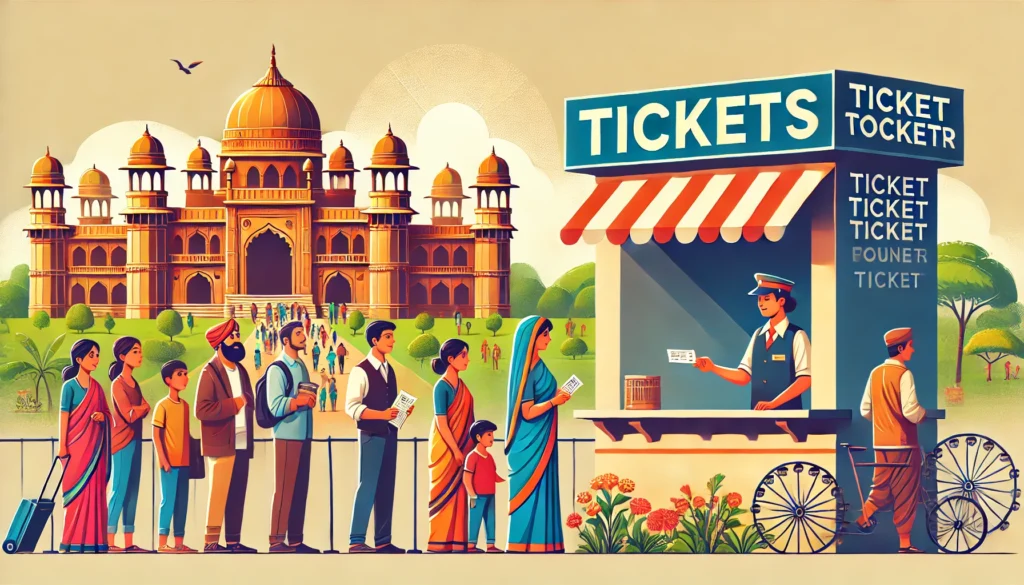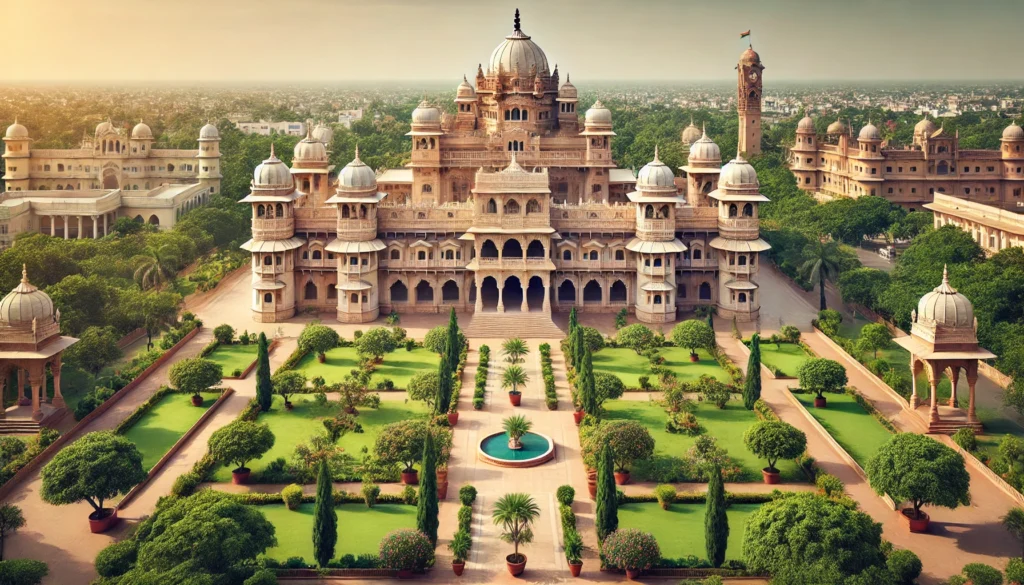Introduction to Jai Vilas Palace Jai Vilas Palace, located in the historical city of Gwalior, Madhya Pradesh, is a stunning testament to the grandeur of the Maratha Empire. Built in the mid-19th century, the palace served as the residence of the Scindia family, rulers of Gwalior. Today, it stands as a popular tourist attraction, drawing visitors from around the world to admire its rich history, architectural splendor, and royal artifacts.
History and Construction of Jai Vilas Palace The construction of Jai Vilas Palace began in 1874 and was completed in 1882 under the reign of Maharaja Jayajirao Scindia. The palace was designed by Sir Michael Filose, a British architect, and blends European and Indian architectural styles. Influences from the Italian Renaissance, Baroque, and Indo-Saracenic designs are clearly visible in the palace’s intricate detailing.
Maharaja Jayajirao Scindia commissioned the palace as a royal residence to reflect his immense wealth and power. The palace spans over 28 acres and is renowned for its majestic Durbar Hall, which remains one of the largest in India. The hall boasts two grand chandeliers, among the largest in the world, and stunning European-style decorations, giving visitors a glimpse of the opulence of the Scindia family.
Architecture: A Blend of Cultures The architecture of Jai Vilas Palace is a blend of European and Indian design elements. The grand structure combines Indo-Saracenic arches and columns with Mughal-style decorations, presenting a unique fusion of Western and Eastern architectural practices. The palace is a perfect example of how the influence of British and Indian styles converged during the colonial period.
One of the most remarkable features of the palace is the Durbar Hall, which served as the venue for royal ceremonies. Visitors can also admire the intricate woodwork, polished marble floors, and ornate decorations that adorn the palace’s many rooms.
The Scindia Dynasty: The Rulers of Jai Vilas Palace The palace was home to the Scindia dynasty, one of the prominent royal families of India. The first ruler to reside in the palace was Maharaja Jayajirao Scindia, and the last ruler was his grandson, Maharaja Madhavrao Scindia. The Scindias were instrumental in shaping the history of Gwalior and the surrounding region.
Under the Scindia dynasty, the palace played a central role in the political and cultural life of Gwalior. The royal family was known for its contributions to the arts, architecture, and military prowess, and the Jai Vilas Palace served as a symbol of their power and prestige.
Museum and Visitor Experience Today, parts of Jai Vilas Palace are open to the public as a museum. The museum houses a wide collection of royal artifacts, antiques, and paintings that provide insight into the opulent lifestyle of the Scindia family. Visitors can explore various rooms, including the Durbar Hall, which is the highlight of the tour. Here, you can see a collection of vintage furniture, portraits of the royal family, and an extensive collection of European-style chandeliers and clocks.
One of the most interesting aspects of the museum is the Scindia family’s memorabilia, including royal attire, arms and armor, and personal items of the rulers. The collection reflects the rich cultural heritage of the family and Gwalior itself.
Visiting Jai Vilas Palace Jai Vilas Palace is one of Gwalior’s most significant tourist attractions. Whether you’re interested in history, architecture, or royal culture, the palace offers a fascinating experience. The museum provides a deeper understanding of Gwalior’s royal past and the grandeur of the Scindia dynasty.
Today, Jai Vilas Palace is partially open to the public as a heritage museum in Madhya Pradesh. Visitors can explore its luxurious interiors and learn about the royal history of Gwalior

Ticket Prices for Jai Vilas Palace Gwalior:
Indian Nationals: ₹300 per person
Foreign Nationals: ₹800 per person
Children (5-12 years): ₹150 per child
Photography Charges: ₹70
Videography Charges: ₹150
Tips for Visitors:
Best Time to Visit: The best time to visit Jai Vilas Palace is during the winter months (October to March), as the weather is more pleasant for exploring the palace.
Nearby Attractions: Gwalior Fort, Saas-Bahu Temples, and the Gwalior Zoo are other nearby attractions you can explore after visiting Jai Vilas Palace.
Guided Tours: Opt for a guided tour to make the most of your visit. Guides provide in-depth knowledge of the palace’s history and significance.
Conclusion Jai Vilas Palace is more than just a tourist attraction; it’s a glimpse into the royal past of Gwalior. With its blend of European and Indian architecture, royal artifacts, and historical significance, the palace remains a symbol of the cultural richness of India. Whether you are a history enthusiast, architecture lover, or simply someone looking to explore Gwalior’s regal legacy, Jai Vilas Palace offers an unforgettable experience.



